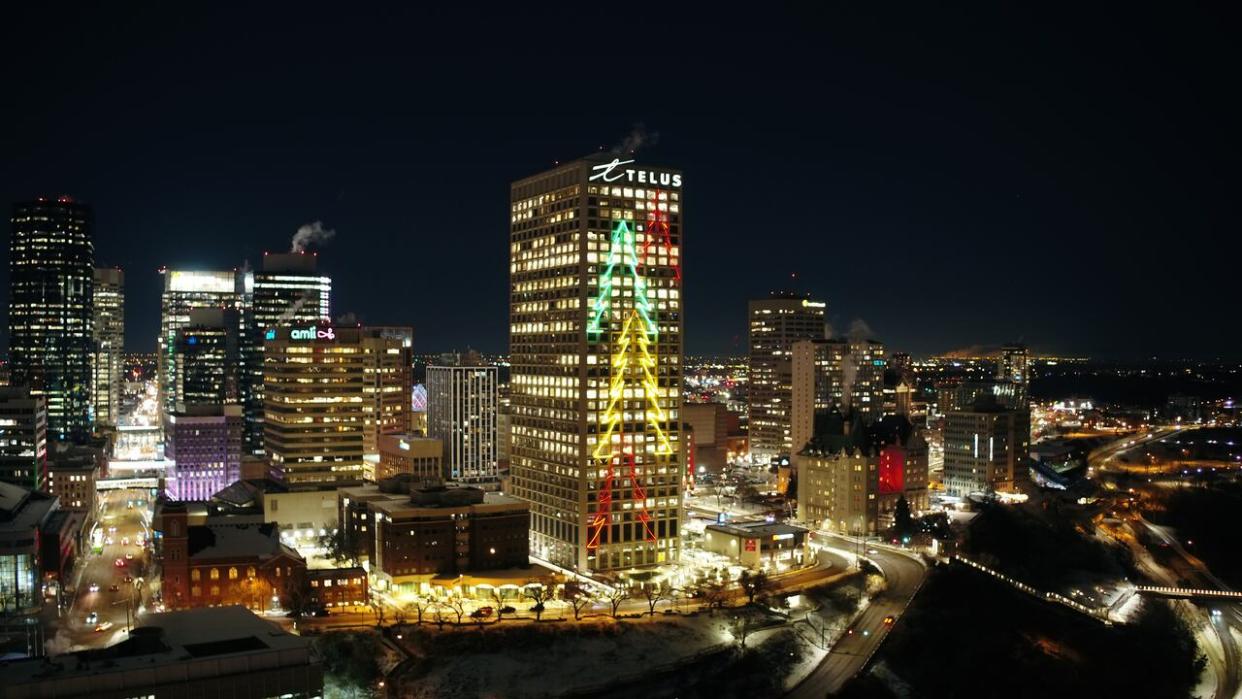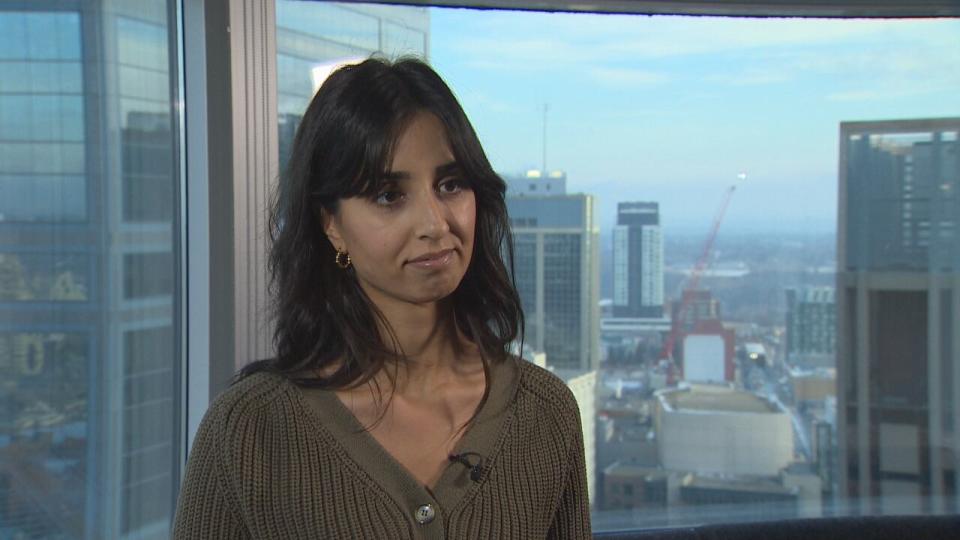Advocates say downtown Edmonton seeing progress, but needs to address underlying issues

Edmonton business advocates say they've seen progress in downtown's post-pandemic recovery, but there's still a long haul ahead.
Public-health measures to stop the spread of COVID lifted for good in 2022, prompting calls for downtown workers to return to the office.
Edmonton Downtown Business Association CEO Puneeta McBryan said that's not the focus now that downtown offices have reached a new normal, with most companies opting for some kind of hybrid arrangement where employees work from home for at least part of the week.
On the ground downtown, that means Mondays and Fridays tend to be quieter, with more people commuting in toward the middle of the week.
This year, the city has been trying to entice people to the core with a grant program for downtown festivals and events, and a "meet me downtown" campaign fronted by a cartoon meatball mascot.
But with research showing activity in Edmonton's core this year still falls well short of pre-pandemic levels, the city's Downtown Recovery Coalition is looking to bigger underlying issues.
According to CBRE Edmonton, the downtown office market recently saw its first positive quarter since the beginning of 2021, with commercial vacancy rates dropping slightly in the third quarter of 2023. But downtown office vacancy still sits just above 24 per cent — among the highest in the country.
"We're realizing that hybrid work is here to stay, and we have a lot of space downtown that we need to do something with," coalition chair Alex Hryciw said.
"Planning out more of a vision for what downtown needs in the long term versus just addressing what we've done in the last 18 months as the critical table-stakes issues … is where we'll set our sights."
She said that means exploring more residential development downtown — including office-to-residential conversions — and pushing for increased social supports beyond downtown, to decentralize shelters and other services mostly clustered in the core.
Downtown activity in 2023 hits 80 per cent of pre-pandemic time: project
Karen Chapple, director of the University of Toronto's School of Cities, leads a project using cell phone data to compare activity in downtowns across cities in North America before and after the arrival of COVID-19.
This year's latest update compares March to mid-June of 2023 to the same period in 2019. Those numbers put downtown Edmonton's cell phone activity at 80 per cent of pre-pandemic levels.
That's not a bad result among more than 60 cities included in the research. Chapple said it's above the North American median of 75 per cent. In comparison, a handful of U.S. cities, like Minneapolis and St. Louis, barely cracked half their pre-pandemic activity this year.
"There's a number of downtowns that perhaps were declining well before the pandemic … and the pandemic was sort of a death knell for them," Chapple said.
Montreal is the Canadian city with the lowest downtown recovery ranking in the research, sitting at 67 per cent of 2019 levels this past spring. For downtown Toronto, that number is 70 per cent.
Chapple said downtown districts tended to bounce back more easily if the economy has a bigger emphasis on essential work that has to be done in person, rather than jobs that can transfer to a home office. Long commutes have now become an even bigger deterrent for bringing people downtown. And cities with a strong tourism sector have seen their downtowns fare better since COVID restrictions eased.
But overall, the trajectory of downtown recovery seems to be at a plateau, and Chapple said cities everywhere are now asking questions about their long-term future.
"I wouldn't expect Edmonton to be back at 100 per cent for a few years. I think you'd be doing great if you can get five per cent of your [downtown] activity back per year," Chapple said.

Puneeta McBryan leads the Edmonton Downtown Business Association and sits on the board of the city's Downtown Recovery Coalition. (Craig Ryan/CBC)
McBryan said she sees a dramatic change in how downtown looks and feels compared to this time last year, with restaurant tables full more regularly and busy streets during big events like concerts and hockey games.
But for Edmontonians who haven't been back downtown much since pre-pandemic days, returning can be a shock.
"When you think about things like social disorder and crime, visible signs of homelessness, and just general busy-ness, there's still a pretty stark difference day-to-day compared to 2019," McBryan said.
McBryan said Edmonton still needs to see significant progress on supportive housing and shelter space, as well as "visible and tangible" action from police to improve safety downtown and on public transit.
But she added downtown, where roughly 13,000 people live, isn't on track to reach the city's goal of more than 20,000 people, and increasing that population has to be a priority.
"That's the only way we're going to get back to — or not even back — that we're going to redefine what vibrancy looks like for the future of downtown. It has to be residential."

 Yahoo News
Yahoo News 
